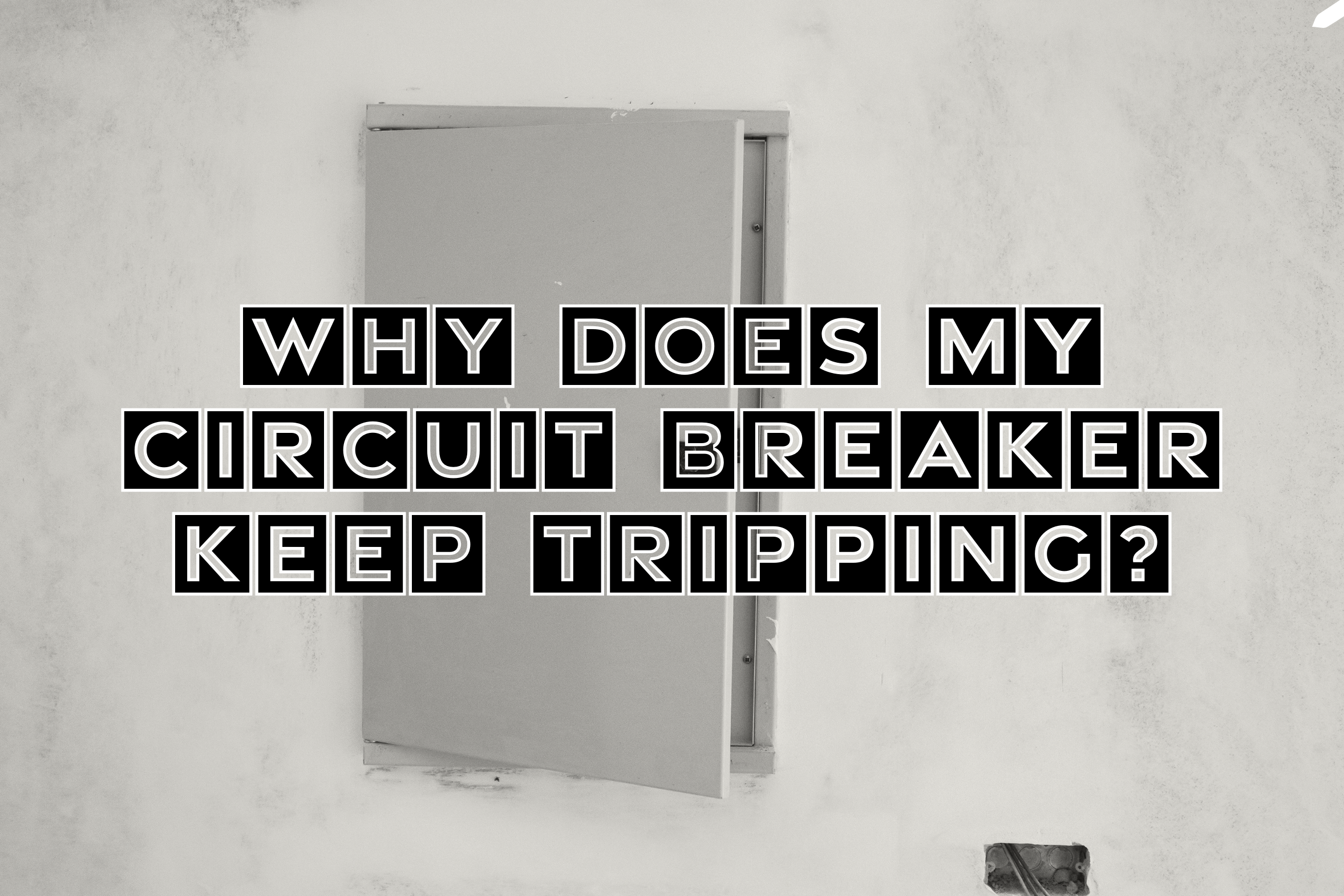Are you having issues with your circuit breaker tripping? A tripping circuit breaker is a common problem that can be – let’s face it – frustrating! One moment, you’re enjoying a movie, and the next, everything is pitch black. Understanding the common causes as to why this happens is essential for every homeowner, not to mention how important it is to figure out what’s going on so you can get it back up and running!
If you’re dealing with this problem, you’re in luck! This blog from MK Electric will guide you through the reasons behind why your circuit breaker may be tripping, how to identify the issue, and what steps you can take to get it fixed. By the end, you’ll be equipped with valuable knowledge to keep your home’s electrical system running smoothly.
What does it mean when a circuit Breaker trips?
First of all, you should know why a circuit breaker trips. A tripping breaker is essentially a safety mechanism, which, if you’re looking at things from the bright side, is actually a good thing. This process happens when the electrical load in your home becomes too high. Then, the breaker shuts off to prevent overheating and potential fire hazards. It’s like your electrical system saying, “Hey, something’s not right here.” This is good news for safety but can definitely be inconvenient for your daily activities.

what are the Common Causes of circuit Breaker Tripping?
Breaker tripping usually happens due to one of four main reasons. These are:
- Overloaded Circuits
- Short Circuits
- Ground Faults
- Overheated Appliances
1. Overloaded Circuits
One of the most common reasons for breaker tripping is an overloaded circuit. This happens when too many devices are connected to a single circuit, exceeding their capacity. For example, when you are using a microwave, a toaster, and a coffee maker all at the time on the same Circuit, it can easily cause an overload.
Troubleshooting an Overloaded Circuit:
- Identify the Circuit That is Overloaded: First, go ahead and unplug some appliances or devices to find out which Circuit is overloaded.
- Reset the Breaker: Then, turn the tripped breaker OFF, then back ON.
- Reconnect the Appliances: Plug your appliances and electronics back in, one at a time. Just be sure to stop if you notice any damage to outlets or wires.
- Move Appliances to Another Circuit: You can also try moving some devices to a different circuit to reduce the load.
- Use Appliances One by One: Keep in mind, you should only run one high-wattage appliance at a time to avoid overloading.
- Use Energy-Efficient Appliances: Energy-efficient appliances can help to reduce overall power demand. So, when possible, try to utilize energy-efficient appliances as much as possible!
- Hire a Professional: Consider hiring a professional to install dedicated circuits for high-power appliances to prevent overloads.
2. Short Circuits
Short circuits occur when a hot wire touches a neutral wire. This creates a low resistance path that allows a large amount of current to flow, which ultimately causes the breaker to trip. Keep in mind that a short circuit is more dangerous than an overloaded circuit as it can generate a lot of heat.
Troubleshooting a Short Circuit:
- Try Resetting the Breaker: Try unplugging all appliances and turning off switches on the Circuit. Next, reset the breaker and see if the short happens right away. If it does, there’s likely a problem with the Circuit or electrical system. If not, the issue is likely within a specific circuit.
- Try Isolating the Culprit: If the short is confined to a specific circuit, flip the light switches one by one to find the short’s location. If it doesn’t occur, the problem might be with a specific appliance. Plug in each appliance one by one to find the cause.
- Call a Professional: Fixing a short circuit can be complex and dangerous. It would be in your best interest to leave this repair to a licensed electrician.
3. Ground Faults
A ground fault happens when a hot wire touches the ground wire or the metal casing of a device. This can cause electric shock and is often a sign of a serious wiring issue. Ground faults are common in areas where water and electricity are in close proximity, such as kitchens and bathrooms.
Troubleshooting a Ground Fault:
Ground faults can be dangerous. It’s best to leave troubleshooting and repairs regarding a ground fault to a licensed electrician. The last thing you should do is try to fix a ground fault by yourself.
4. Overheated Appliances
An overheated appliance is typically caused by human error. Hey, it happens – no judgment! Washers and dryers can easily get overloaded or overused, causing the appliances to get overheated as a result. Large household appliances that may get overheated include (but are not limited to):
- Microwaves
- Dishwashers
- Refrigerators
- Ovens
- Washers and Dryers
Troubleshooting Overheated Appliances:
- Practice Preventative Maintenance: Regularly clean dirt, dust, and grease from the coils and cables of stoves, refrigerators, and dryers. For instance, you can use a coil brush or vacuum to clean the refrigerator’s condenser coils. You should also make it a habit to remove lint from the dryer after each load to avoid overheating and fire hazards.
- Be Mindful with Cords and Outlets: Be mindful and don’t overload outlets or extension cords. You should make sure electrical connections are secure and check the insulation around appliances regularly.
- Check the Condenser: Monitor the condensers of appliances like refrigerators, freezers, and dryers, especially in summer. Clogged condensers can cause overheating.

how can you Prevent Future Circuit Breaker Trips?
Preventing breaker tripping does involve a few proactive measures to manage your electrical load better.
- Try to Distribute the Load Evenly
Make sure not to overload a single circuit by distributing your electrical devices across multiple circuits. This can help balance the load more equally and prevent tripping.
- Try to Use Energy-Efficient Appliances
Energy-efficient appliances consume less power and can help reduce the strain on your electrical system. Consider upgrading older devices that are known to be energy hogs.
When should you Call a Professional Electrician?
While some DIY solutions can be effective, some situations sometimes require the help of a professional.
- Repeated Tripping
If your breaker continues to trip even after taking DIY steps, it’s time to call a licensed electrician. Repeated tripping indicates a more serious underlying issue that you don’t want to put off any longer.
- Visible Damage
See any visible damage? Things like burnt wires, melted outlets, or scorch marks, are all things you should not attempt to fix yourself. These are signs of severe electrical problems that require the knowledge and expertise of a licensed professional.
- Electrical Shocks
Electric shocks – these are something you never want to mess around with and are a clear sign that something is seriously wrong. If you happen to experience an electrical shock, please never ignore this warning and seek professional help immediately.
What Are the Signs of a Bad Breaker?
Sometimes, even a breaker can go bad. It’s not super common, but it happens! Signs of a bad breaker are:
- Discoloring
- Burning smells
- Buzzing, crackling, hissing, or crackling noises
If you suspect your circuit breaker is actually the culprit of your current electrical woes, it’s best to consult a professional as soon as possible!

If you’ve tried troubleshooting and are still facing issues, don’t hesitate to call a professional. And remember, preventive measures go a long way in ensuring your electrical system runs smoothly. Things like a yearly electric inspection are always a good idea to stay on top of! Consider booking a consultation with one of our electricians for more tips and expert advice. Your safety and your home’s safety are worth it!
You can call MK Electric today at (740) 652-9775 or schedule an appointment online now by clicking here!


 Book Now
Book Now

